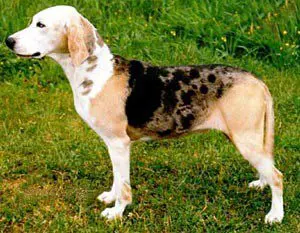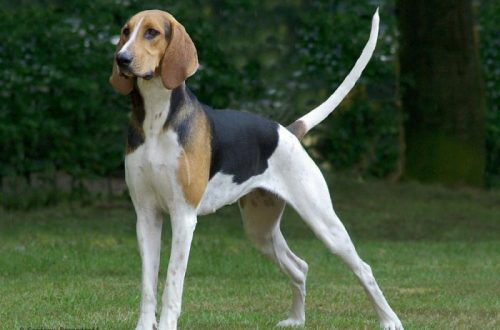
Poodle
The poodle is an elegant and pretty dog, famous for its unusual curly coat. Representatives of this breed have a lively character, cheerful disposition and very smart.
Contents
Characteristics of Poodle
| Country of origin | France |
| The size | large / medium / petite / toy |
| Growth | 45-60 cm / 35-45 cm / 28-35 cm / 24-28 cm |
| Weight | 20-25 kg / 10-12 kg / 6-8 kg / 5-6 kg |
| Age | 12-18 years old |
| FCI breed group | companion dogs |
Basic moments
- Poodle is one of the most kind and obedient dogs.
- He has an extraordinary mind, an outstanding sense of smell, hearing and vision. Large and small dogs can be used for hunting, detective work, and truffle hunting.
- The poodle loves water very much and is ready to frolic in it endlessly.
- Active, able to withstand great physical exertion. In urban conditions, it needs long walks.
- All poodles, even their smallest varieties, are unpretentious, have good health and have the status of centenarians.
- Dogs are absolutely not aggressive, on the contrary, they are endowed with a special benevolence towards people.
- Excellent companions, but poor watchdogs.
- Representatives of the breed get along well with children, becoming their friend and partner in games.
- Poodles have a thick, springy coat that is versatile for creating a variety of hairstyles. They need regular brushing and trimming.
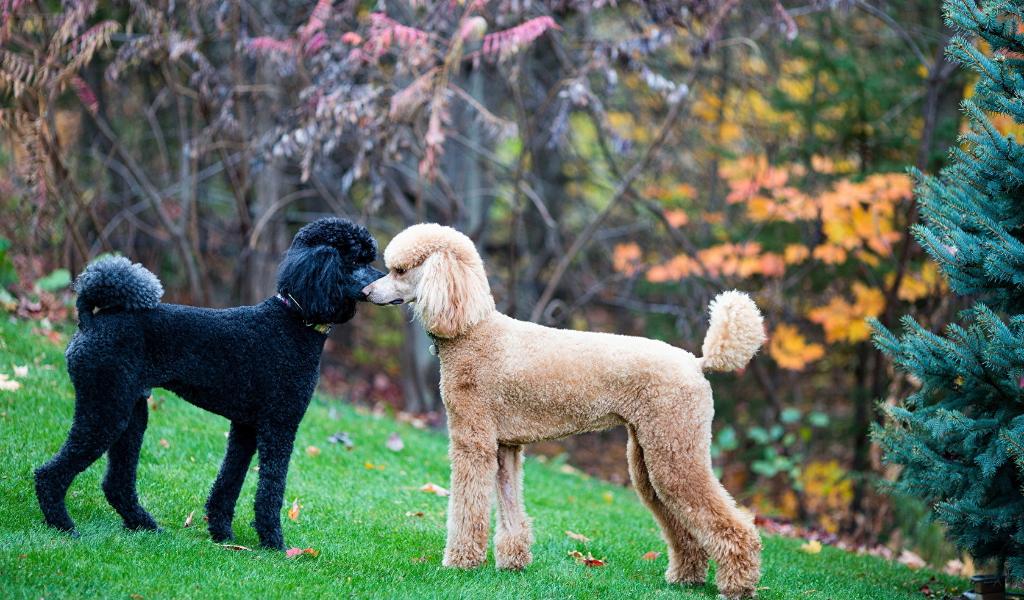
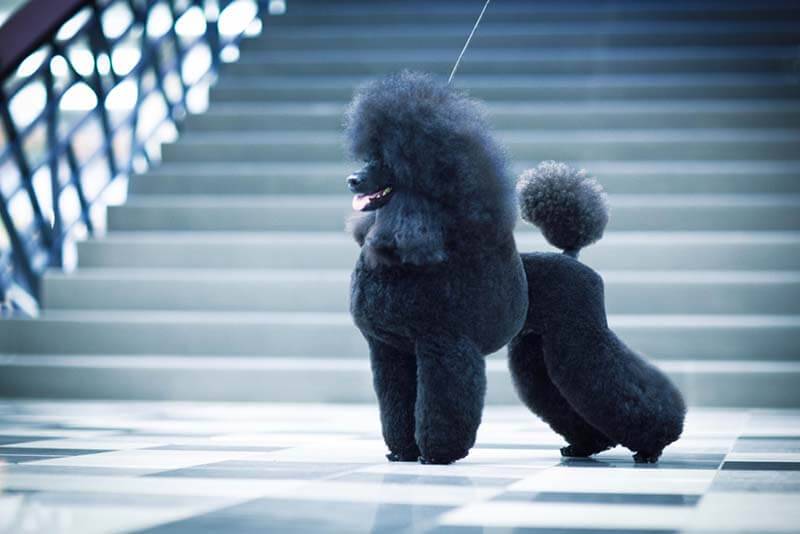
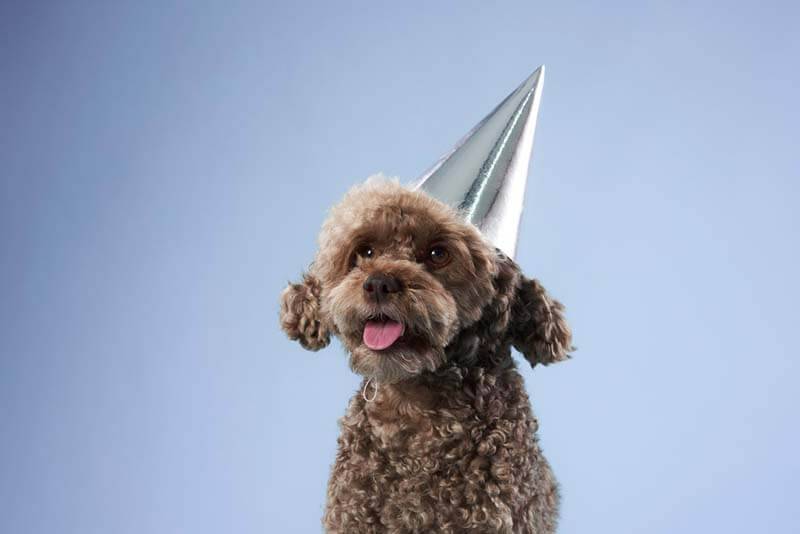
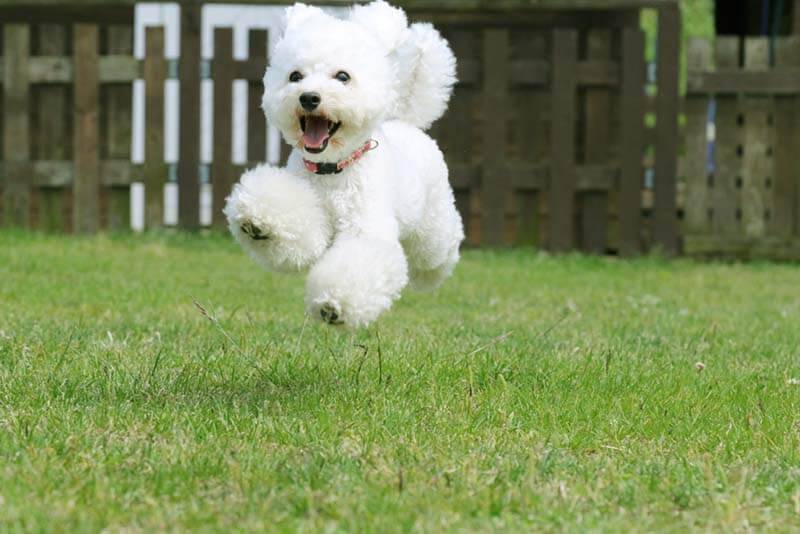
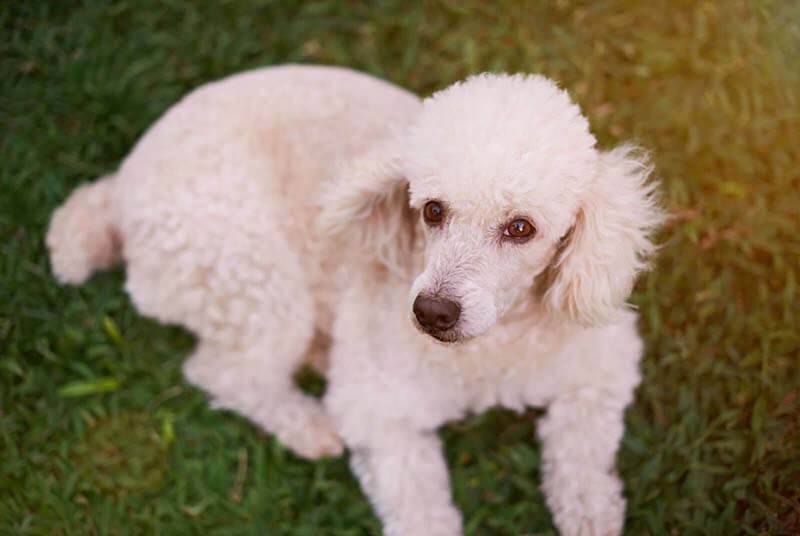
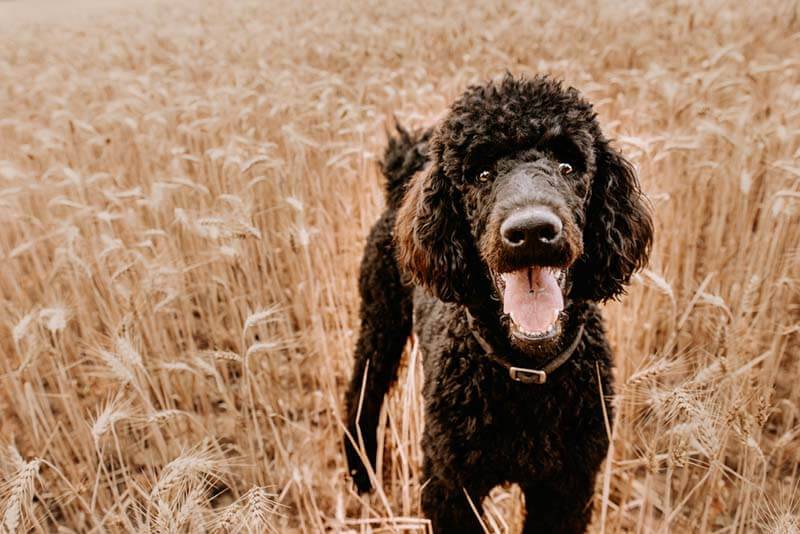
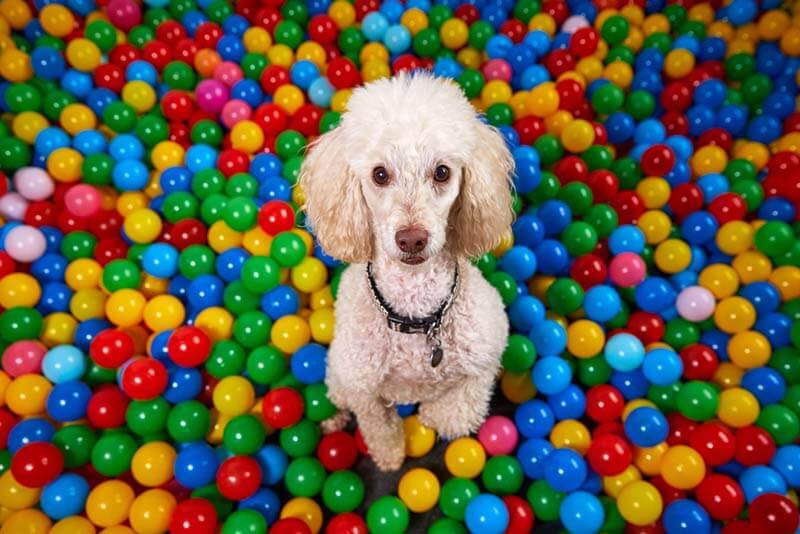
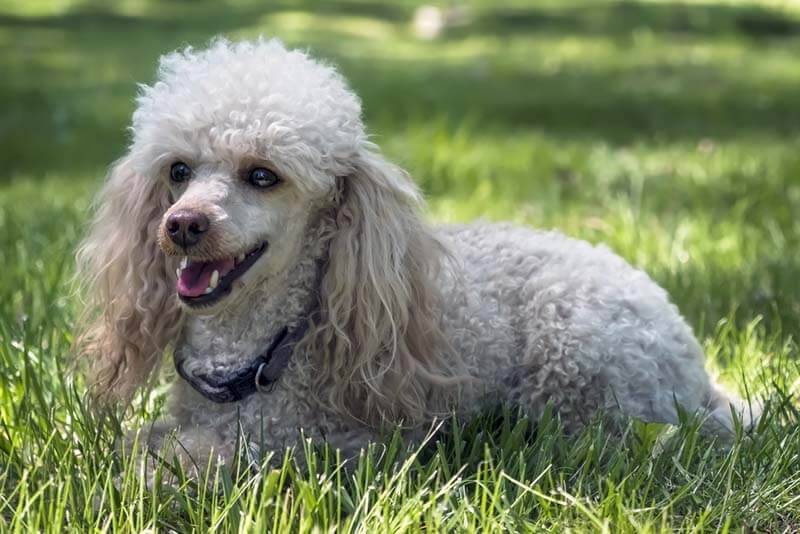
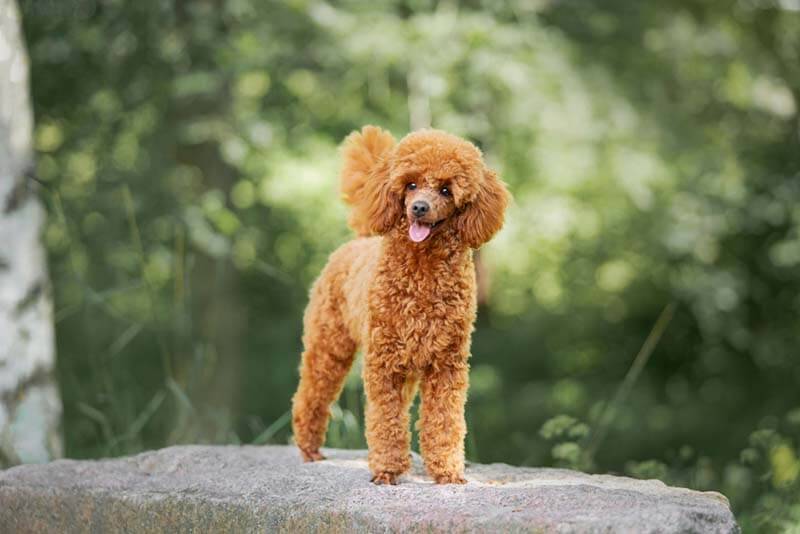
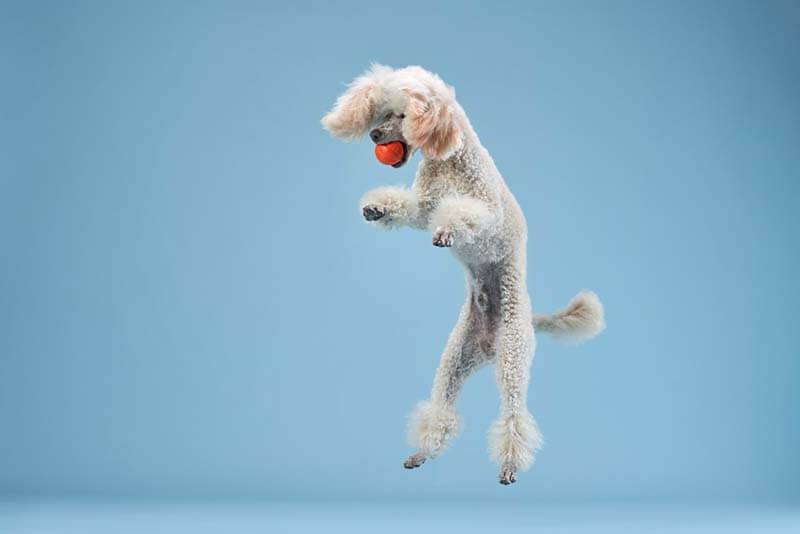
The poodle is the embodiment of beauty and extravagant decorativeness, combined with the harmonious constitution of this dog, its magnificent temperament, and high intelligence. The delightful appearance of the poodle sparkles with artistry, charm and expression, and his kindness and love of life knows no bounds. These wonderful dogs are distinguished by incredible devotion, which extends to all family members, while poodles are very sensitive to human attention. They are cheerful, mischievous, love to fool around and are always ready to take part in games and fun.
History of the poodle breed
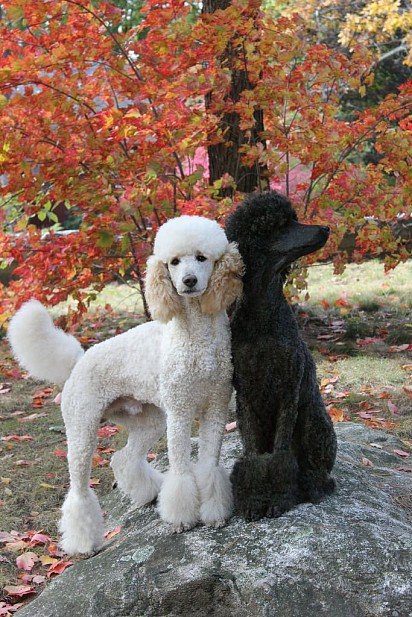
The belief that the poodle is one of the oldest dog breeds unites all specialists from the world of cynology. However, there is no consensus about his homeland, ancestors, stages of breed formation. At different times, three countries claimed the right to be considered the birthplace of the poodle – Germany, Hungary, France. The original purpose of poodles seems to have been hunting, and their progenitors were shaggy shepherd dogs and so-called water dogs, used to bring shot game from ponds during hunting. This kind of dogs lived in many countries of Western Europe.
Today, the prevailing opinion is that the poodle owes its origin to several breeds of dogs that differ from each other in size, but have a unifying feature – a long shaggy coat that covers the entire body. It is the growth varieties of poodles that are still the cause of disputes about the origin of the breed. So, among the ancestors of a large and medium poodle, water spaniels are called, whose ancestors, in turn, are considered to be barbet (French water dog), dogs related to komondors (hairy Hungarian shepherd dogs) and bullets (Hungarian water dogs). In the appearance of little poodles there are features of toy spaniels, maltese , bichons . Retrievers, pointers and greyhounds presumably also influenced the formation of the breed.
In reconstructing the history of the breed, experts relied on etymological analysis, written documents, images of dogs resembling a poodle. In German, “pudel” (or “pudelin”) means “puddle”, “swamp” or the whole concept of “flopping in the water.” The English word “poodle”, derived from “puddle”, also translates as “puddle”. The French name for the breed is Canish. The word “caniche” comes from “chien canard”, which means “duck hunting dog”.
Images of dogs resembling poodles in their appearance can be seen on ancient Roman and Greek coins, bas-reliefs of ancient Roman tombs. Poodle-shaped dogs are depicted in medieval murals of the Benedictine monastery of Monreale in Sicily and the abbey of Saint-Remy in France. Dogs with the “lion haircut” characteristic of poodles are present on the canvases of painters of the Dutch and Flemish schools. The first written descriptions of the poodle can be found in European chronicles dating back to the 16th century, and they already mention varieties of these dogs that differ from each other in size and color.
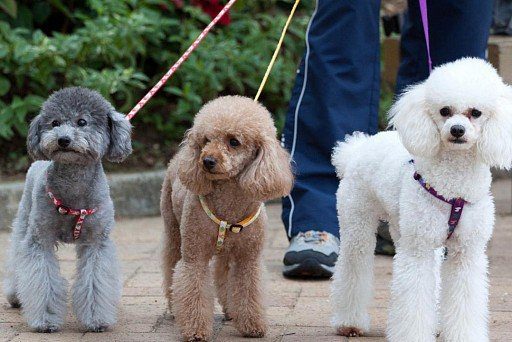
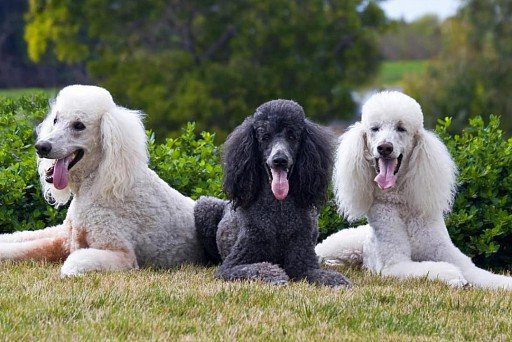
By the 18th century, poodles had gained extraordinary popularity among the European nobility. At the same time, hairdressing was rapidly developing in Europe, and during the reign of Louis XVI, the first grooming salons appeared in France. The court hairdressers, who had mastered the new craft, began to cut the thick-haired favorites of their noble masters in various styles. The king himself, for the sake of his wife Marie Antoinette, who adored poodles, proclaimed the miniature poodle the official court breed.
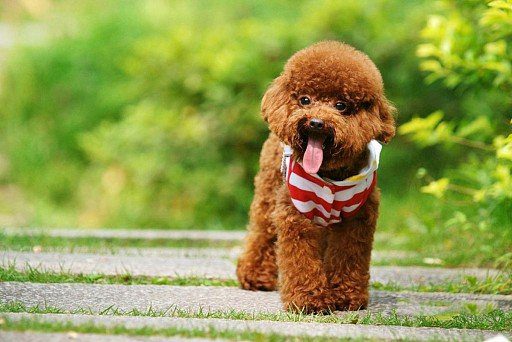
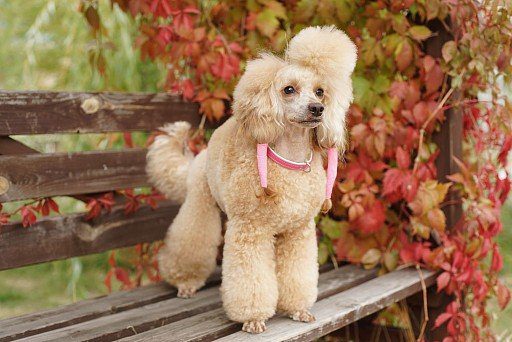
The aesthetic appearance and good-naturedness of the poodle also appealed to creative, artistic and extravagant natures. These dogs were favorites of such great people as George Sand, Thomas Mann, Schopenhauer, Ludwig van Beethoven. Poodles have also become favorites of circus performers, as their outstanding ability to succumb to training allows them to perform stunning tricks in the arena. However, the poodle not only entertained high society and bohemia. His courage, devotion and ingenuity were also in demand in military battles – dogs searched for the wounded, delivered secret reports.
The first Poodle standard was defined and published in Great Britain in 1886, later breed standards were drawn up in Germany. In each of these countries, animal selection went its own way, which led to the appearance of various types of poodle. The British preferred the lighter, graceful skeleton of the dog. And in Kaiser’s Germany, these dogs were bred, trying to give the breed a heavy, massive constitution. It is known that since the end of the 19th century, the archive of the Reich Chancellery of Kaiser Germany was guarded by imposing royal poodles. For a long time in the countries of Eastern Europe – Poland, Czechoslovakia, Yugoslavia, Hungary – breeders were guided by German standards, in other countries they preferred poodles from the English “dynasty”.
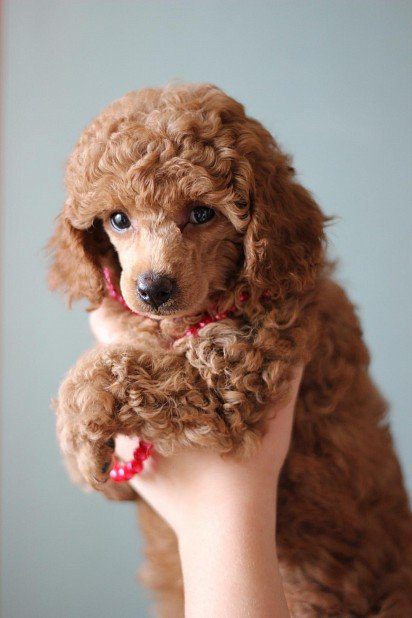
In France, the first poodle club was opened only in 1923, but very soon this country received the title of founder of the modern breed standard. Long-term club president and owner of a poodle breeding kennel, Mademoiselle Galyani, has achieved excellent results in breeding dogs of large, small and dwarf sizes, many of which have become champions. In 1936, the FCI (Federation Cynologique Internationale) approved the breed standard developed by the French poodle club.
In Russia, the breed gained popularity in the 19th century, although already in the time of Catherine II, poodles settled at the royal court. These noble-looking dogs were recognized not only in the aristocratic environment, but also in the circles of the Russian intelligentsia, artists, actors, writers. Until now, there is an opinion that the poodle is a dog for people with taste and intelligence. In Russia, mainly large poodles were bred, and miniature breeds were imported from Europe.
In the USSR, after the Great Patriotic War, under DOSAAF, the section “Royal Poodle” began to work, and in the 60s a section of lovers of small poodles was also opened. In 1989, the All-Union Poodle Club was created, renamed in the 90s into the Russian Poodle Club. Today it is part of the structure of the RKF.
Today, some diversity in the breed of poodles is still preserved, which is most clearly seen when comparing a large poodle and a toy poodle, bred in the middle of the last century. However, breeders have come close to their goal – to ensure that the smallest dog is an exact mini-copy of the largest representative of the poodle breed.
Video: Poodle
Appearance of poodles
The current breed standard approves six poodle color options, two coat types and four height varieties: large (or standard, royal), small (or medium), miniature (or dwarf), toy poodle.
Frame
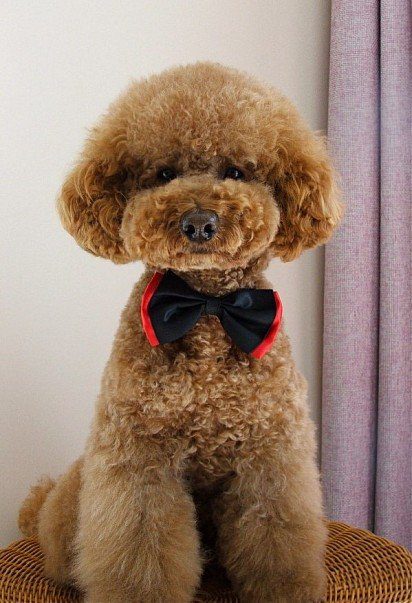

The poodle is proportionately complex. The length of the body exceeds the height at the withers, which should roughly correspond to the height at the rump. The chest is deep, long, wide, well developed. Its front part is located high, which gives the fit of the head pride and nobility. The ribs are oval-vaulted. The line of the back should be straight, the loin should be strong and muscular. The belly and groin of the poodle are tucked up, but not as expressive as those of the greyhounds.
Head
Elongated, in proportion to the body, has an elegant shape, but not too light. The skull is clearly sculpted, slightly convex in profile. The line of transition from the skull to the muzzle is almost imperceptible. The contour of the muzzle is straight, elongated, not too sharp. The lips are of medium thickness, the upper one comes over the lower one, but does not hang down. The color of the lips in black, white and gray dogs is black, in brown dogs it is brown, in apricot poodles it can have any shade: from thick dark brown to black. The same color scheme, matching the color of the animal, is characteristic of its nose. The nose itself is quite large, the nostrils are well developed. The cheeks do not protrude, tightly fitting the zygomatic bones, which are weakly expressed.
Jaws and teeth
The jaws of the poodle are strong. The bite should be scissor, teeth should be white.
Eyes
Almond-shaped, not convex, located slightly obliquely in line with the bridge of the nose. Eye color in black, white, gray, apricot dogs is dark brown or almost black with a blue tint. Brown poodles have brown eyes. Often in their color there is a dark amber hue. The expression of the eyes is lively, curious and even somewhat passionate.
Ears
Set high, fairly long, hanging down to the corners of the lips along the cheeks and adjacent to them. They widen downwards and are rounded at the tips. Poodle ears are effectively decorated with thick long hair.
Neck
Strong, slightly curved at the occiput. It is of medium length, slightly less than or equal to the length of the head.
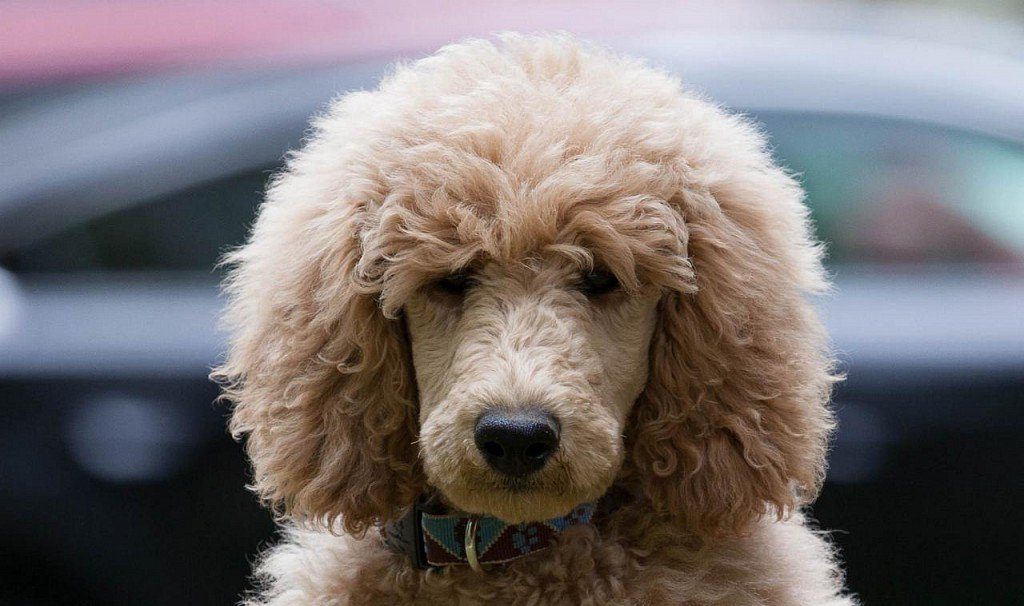

limbs
The forelegs should be immaculately straight, parallel to each other, graceful, but also moderately muscular. The pasterns should be strong, but not massive. On the hindquarters, especially in the region of the thighs, well-developed musculature should be clearly visible. When viewed from the rear, the hindquarters, like the forelegs, appear parallel to each other, but looking at the dog from the side, you should notice that the stifle and hock joints are curved. Metatarsus are located vertically.
The paws of poodles are oval-shaped, they are quite small, but strong. The fingers are connected by a swimming membrane, they are compactly bent, bent to the ground, their pads are dense and plump. The color of the claws of black and gray poodles should be black. Browns are brown or black. In whites – black or pink, natural for the horn. In apricot-colored dogs, the nails may be colored black or dark brown.
Tail
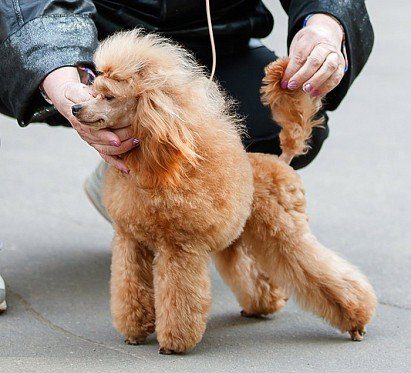

Thick at the base, the tail is set high, pointing upwards. It can be either natural length, or shortened by half or a third. If the dog is in a calm state, he keeps it lowered. During movement, the tail is directed upward in an oblique direction.
Traffic
In the movements of the poodle, ease, lightness and at the same time energy are felt. His walk is incredibly elegant, reminiscent of a dance. Turning to a trot, the dog moves springily, showing mainly the strength and muscularity of the hind limbs.
Wool
The poodle is the owner of a very thick and lush coat, it is the dignity of this dog, making the dog completely unique. The breed is characterized by two types of wool – curly and corded.
Curly wool has a rune-like structure. It is clearly curled, very lush, voluminous, dense, has elasticity. Corded wool is also thick. Thin and delicate, it forms a knocked-down texture, which is countless thin cords that cover the entire body of the dog. Cords must be no shorter than 20 centimeters. The longer the cords, the higher the show potential of the poodle. In order for the dog to look neat and elegant, it must be combed so that the hair hanging down with cords hangs evenly on both sides of the body. The hair that grows above the ears can be gathered into an elegant “tail” and decorated with a spectacular bow.
Color
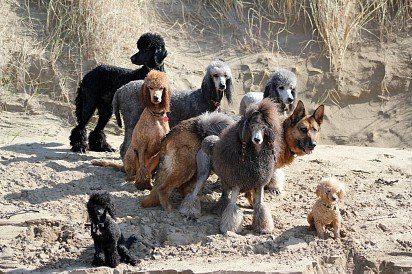

According to the FCI standards, the color of the poodle can be black, white, brown, gray, apricot, red. Other international organizations recognize other colors as well. The main requirement is that the color should be uniform, without marks.
There are restrictions for certain colors. So, brown should be quite dark, warm tone. Dark chestnut color, which is obtained by fading black, is not allowed. Beige and lighter shades are also undesirable.
The intensity of the gray color should not be weakened, its shades should not approach either white or black.
The apricot color of the poodle should be even and not change into beige, cream, dark chestnut, red colors.
Red color, in turn, should not resemble apricot.
Haircuts
There are three main poodle grooming standards that apply to both curly and corded dogs. Classic hairstyle – “Lion”. Dogs with a similar haircut, but not as decorative, can be seen in the oldest images of this animal. The dog is cut from the base of the tail to the ribs. Also, the haircut affects the upper part of the muzzle to the lower eyelids, the lower part of the muzzle, cheeks. The hind and lower limbs are cut short, with the exception of cuffs or bracelets. It is permissible to leave hair on the forelimbs – “panties”. Woolen decoration may be present on the lower back. A round or oval pom-pom is left on the tail. Mustaches of dogs are not cut.
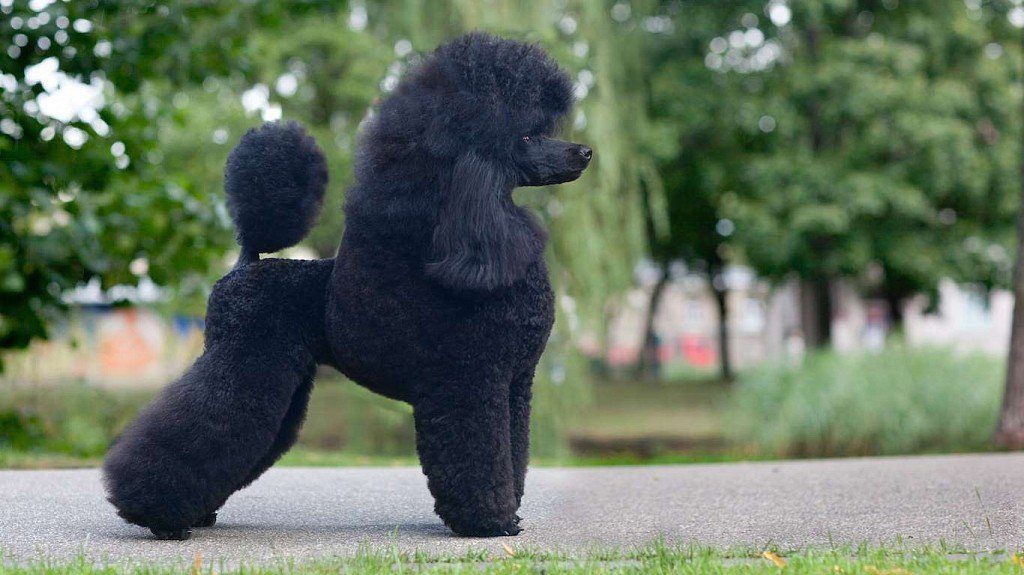

“English haircut” is similar to “Lion”. This option involves modeling puffy cuffs or bracelets on the hind limbs, when hoops are cut short between them. On the head – a top note (wool gathered in a bun, stabbed, for example, with a bow on an elastic band). Mustaches are trimmed.
Hairstyle “Modern” implies the preservation of wool on the front and hind limbs. There are such options:
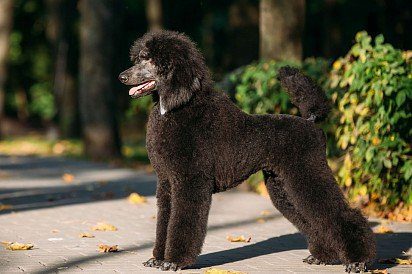

- the hair is cut very short on the front paws from the claws on the paws to the claw on the wrist (fifth toe). The lower part of the hind limbs is cut to a height corresponding to the clipping on the front. The muzzle and tail are cut in accordance with the “Lion” variant;
- the wool is shortened along the body to a length that should not be less than 1 cm to create a textured moiré effect. The length of the coat should gradually increase from the back to the ribs and upper limbs;
- in the variant with leveled (ordered) hair, a cap is left on the head, but not too high, the hair also remains on the back of the neck. It should smoothly descend to the withers, then to the shoulder blades and the front of the chest. In front, the coat should form a continuous line to the perfectly trimmed tips of the paws. The hair remains on the underside of the ears. Its length increases downwards, ending with an aligned fringe. The hair on the top of the ears can be shortened or shaved off.
Types of poodle haircuts
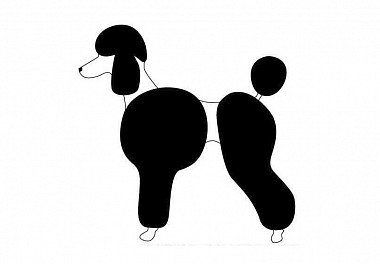

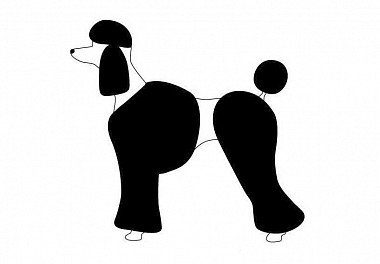

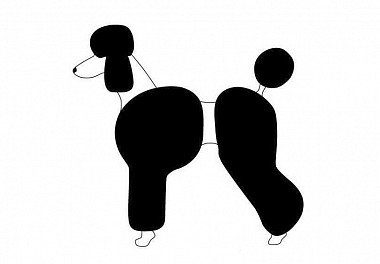

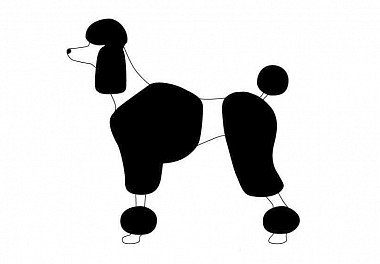

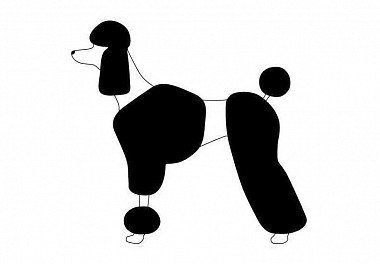

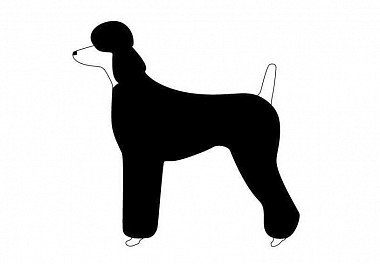

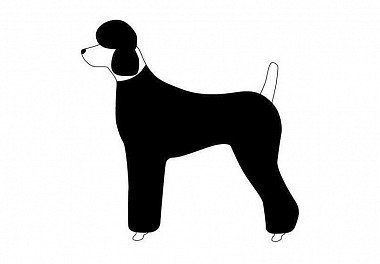

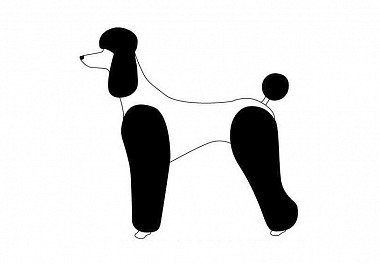

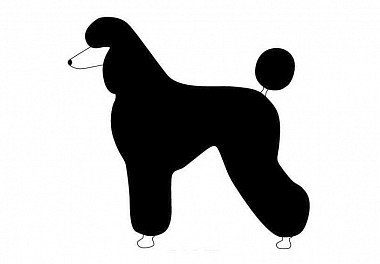

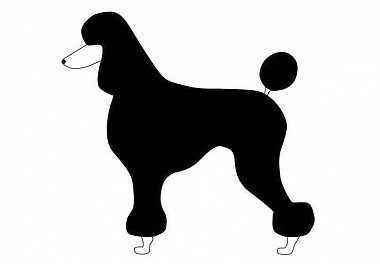

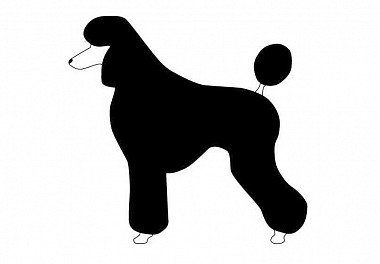

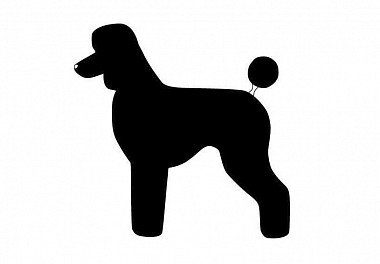

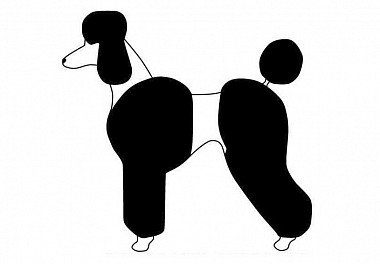

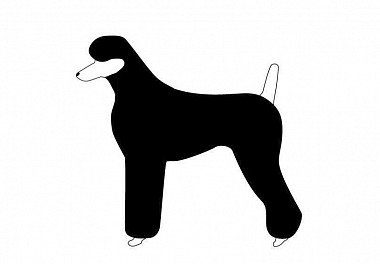

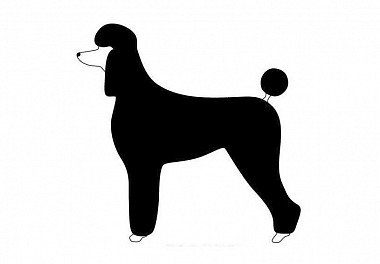

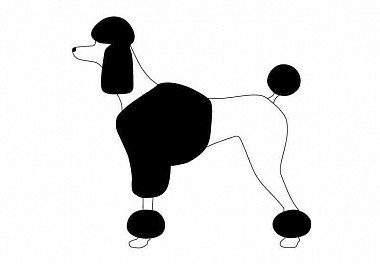

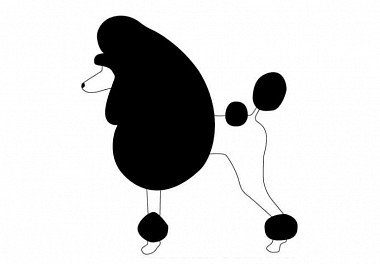

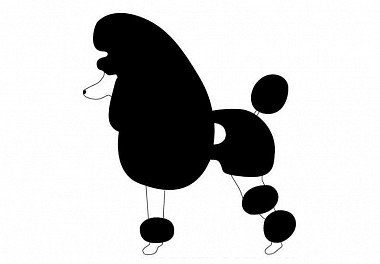

Disadvantages of the breed
- Arched or slumped back.
- Tail set too low.
- The nose is partially depigmented.
- The muzzle is pointed, spots on the muzzle.
- Hump on the back of the nose.
- Excessively large, frankly deep-set eyes, their color is not dark enough.
- Too short ears.
- The slope of the croup.
- Long, gliding step, smooth movement.
- Sparse, weak or excessively hard coat.
- Excessive nervousness.
Poodle photos
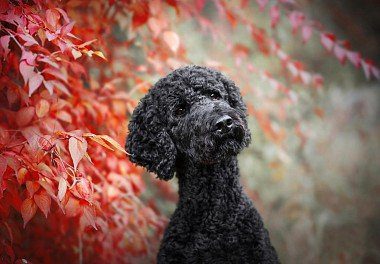

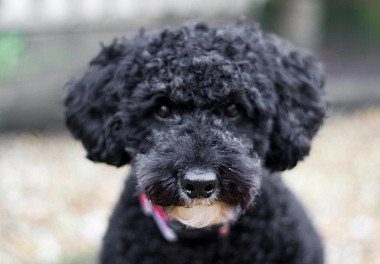

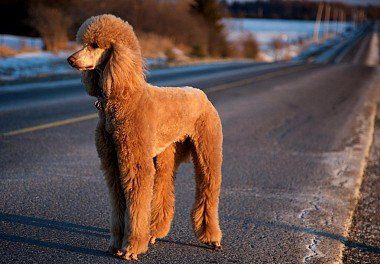

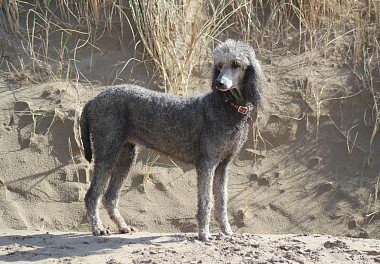

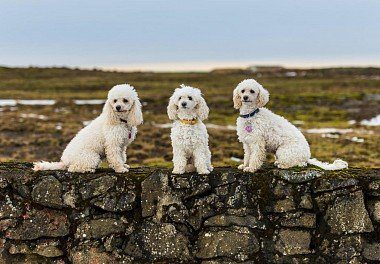

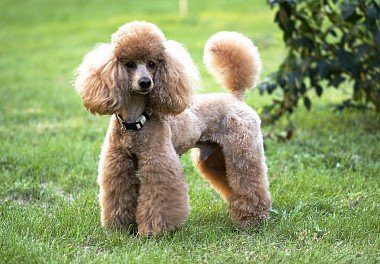

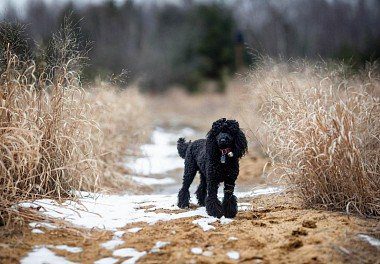

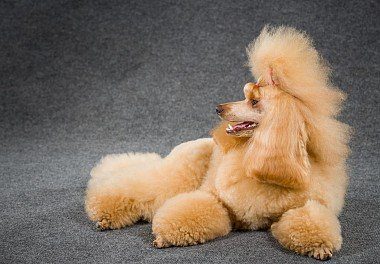

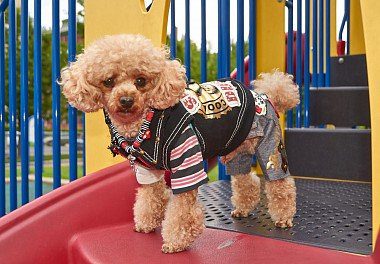

Poodle character
Poodles, whose appearance is distinguished by sophistication and elegance, are often called “female” dogs, and this is completely unfair. Do not forget that the ancestors of this dog with a delightful appearance were hunting dogs. From them, the poodle got mobility, energy, love for an active lifestyle. He loves sports with the ball, jogging with the owner, and swimming gives him the greatest pleasure. However, the dog will also not mind lying on the couch with the owner and watching TV shows.
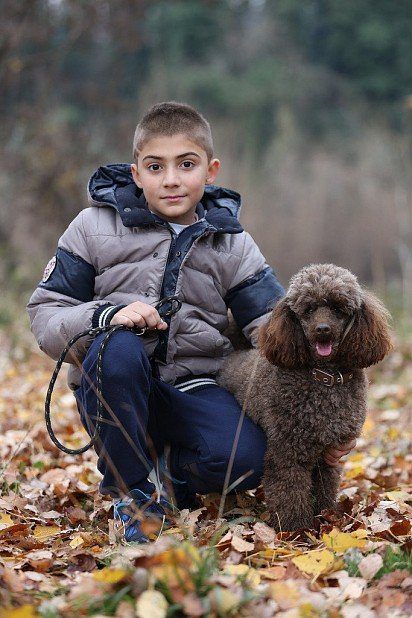

The poodle is distinguished by outstanding intelligence and quick wit. They say about him: “A poodle is not yet a person, but it is no longer a dog.” It is the intelligence and intelligence of the poodle that determine his behavior, demonstrating unparalleled obedience. It may even seem that this dog is a saint, but in fact he idolizes his master and recognizes him as an indisputable authority, as he realizes that he is smarter than himself. The dog supports the “leader” in all his actions, and does not consider it necessary to argue with him. If the owner is engaged in digging the earth in the garden, the poodle will immediately join the work and begin to dig the ground nearby, and if he decides to sit down and enjoy the sunset, he will certainly settle down next to him and will selflessly observe this action.
Natural observation, intelligence, memory, curiosity help the poodle to capture all the nuances of communication – changes in facial expressions, gestures, intonations of the owner – anticipating his further actions and wishes. The dog is ready for anything, just not to upset the owner, therefore, he strives to fulfill his instructions exactly, and sometimes manages to do this even before he expressed his wishes. If a poodle has made a mistake, by his behavior he will demonstrate that he is asking for forgiveness, he has realized everything, and this will not happen again in the future.
The poodle’s ability to perceive human speech is superbly developed. It is believed that he knows more than 70 words. But fans of this breed of dog are convinced that such a number is excessively underestimated. Moreover, poodles understand many words by following the movement of a person’s lips. This gift allows them to become excellent companions for deaf and dumb people.
The poodle is a very social dog. He needs communication not only with the owner, but also with all family members. At the same time, the innate sense of pride does not allow the poodle to be intrusive. The owners of this dog should understand that it needs signs of attention and displays of love. Otherwise, the poodle may well become depressed and even sick.
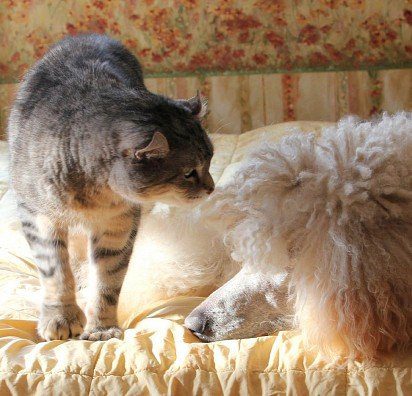

Poodles love children. They are ready to be both friends and guardians at the same time. By the way, the poodle’s ability to guardianship can manifest itself in relations with all family members, regardless of their age – in this the dog realizes its shepherd inclinations.
The poodle is not aggressive and is completely harmless. Attitude towards strangers depends on whether he liked the person or not. But in extreme cases, he can bark at the objectionable. Poodle guards are useless, but if they feel danger, they will certainly notify the owner with a ringing bark.
Poodles get along well with pets living with them in the same family, including cats. However, representatives of the cat family, not familiar to the dog, may suffer if the hunting instinct jumps in it.
The main character traits of poodles of different height categories are almost identical, but in the character of a toy poodle there may be some cowardice, manifested in the fear of loud sounds and sudden movements. This shortcoming is corrected with the help of proper education. The toy poodle is less energetic than its counterparts.
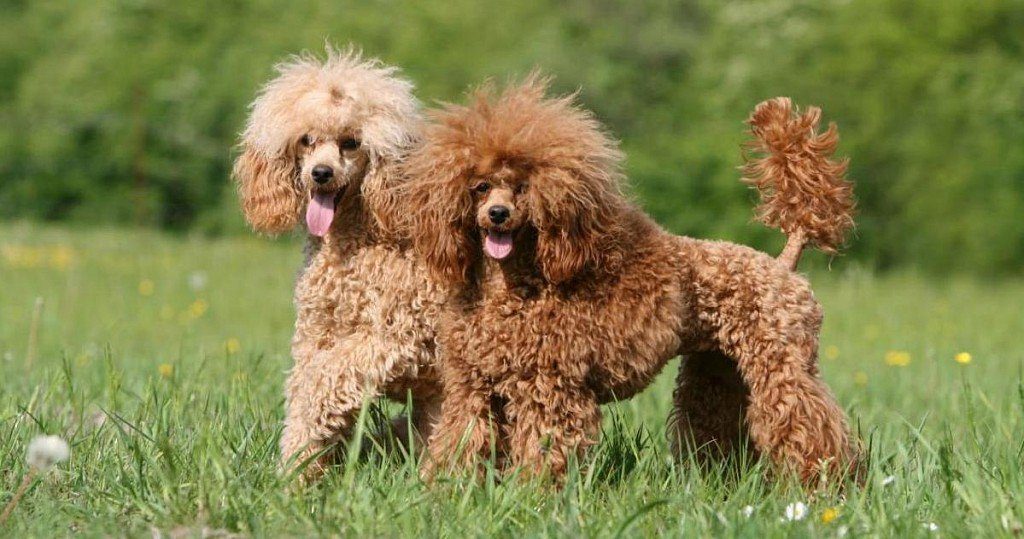

Education and training
Such innate character traits of the poodle as quick wit, obedience and imitation, as well as its inherent sense of shame, make the process of training and training almost hassle-free. These dogs memorize commands very quickly, it is enough for them to explain or show a couple of times what and how to do, and they will remember the lesson forever. Poodle puppies are playful, like children, so training should take place in the form of a game, where the owner acts as a partner and comrade. The dog begins to perceive human life as a game, and tries to imitate people: puts his toys in a box, brings the right things. Growing up, the poodle literally becomes human, begins to take an active part in family household affairs, shares the hobbies of its owners.
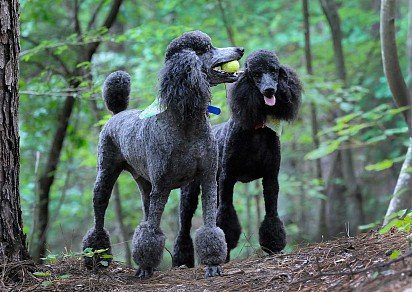

Yelling at a poodle and punishing him is not allowed. Actually, he himself rarely gives a reason for this. If, nevertheless, the dog “mistakes”, the explanation of his mistake should not take place in a too edifying and tedious form. Shaming your pet should be brief and convincing at the right time and in the right place so that he understands what is at stake.
A poodle is a thinking dog, and this quality needs to be developed and encouraged: communicate with him a lot, talk, explain his actions, talk about what you expect from him.
A poorly bred dog who does not know what subordination is is likely to imagine himself as the head of the family and will demonstrate defiance. This is especially true for miniature and toy poodles.
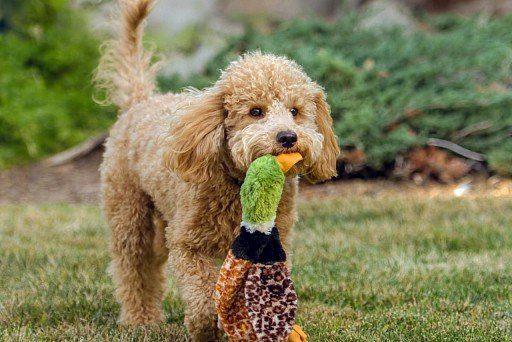

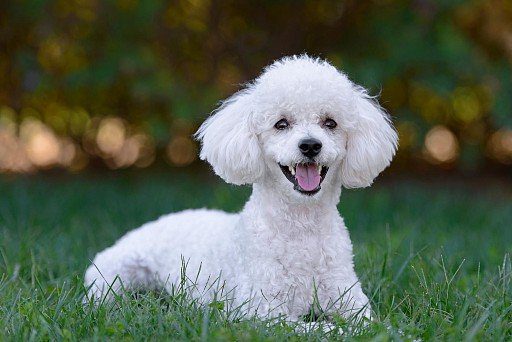

Care and maintenance
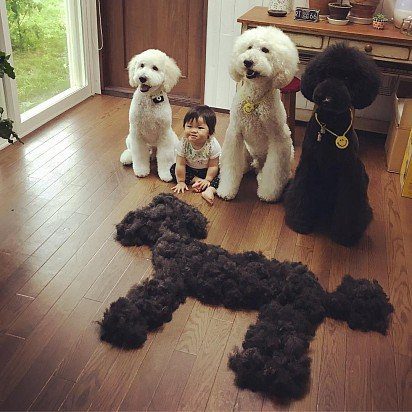

In order for the poodle to always look healthy, well-groomed and neat, regular care is needed for his magnificent thick coat. It is desirable to comb the dog daily, in any case, at least three times a week, since his growing hair does not fall out. To do this, you should purchase a special comb for combing a poodle and a massage brush.
You need to comb the dog, alternating movements along the coat and against it. First comb the hair on the body, then on the paws. If you do not follow this rule, the dog’s hair will fall off, get tangled, tangles will form, which are very difficult to get rid of.
The poodle loves water very much, so bathing, which he needs often enough, does not cause him any inconvenience. You should wash your dog at least once or twice a month, using a special shampoo for long-haired dogs. Before the water procedure, the poodle must be carefully combed. If tangles have formed, they must be disassembled or carefully cut with sharp miniature scissors. Lather the dog and thoroughly rinse off the foam should be at least two times. Carelessly washed wool will certainly quickly fall off again.
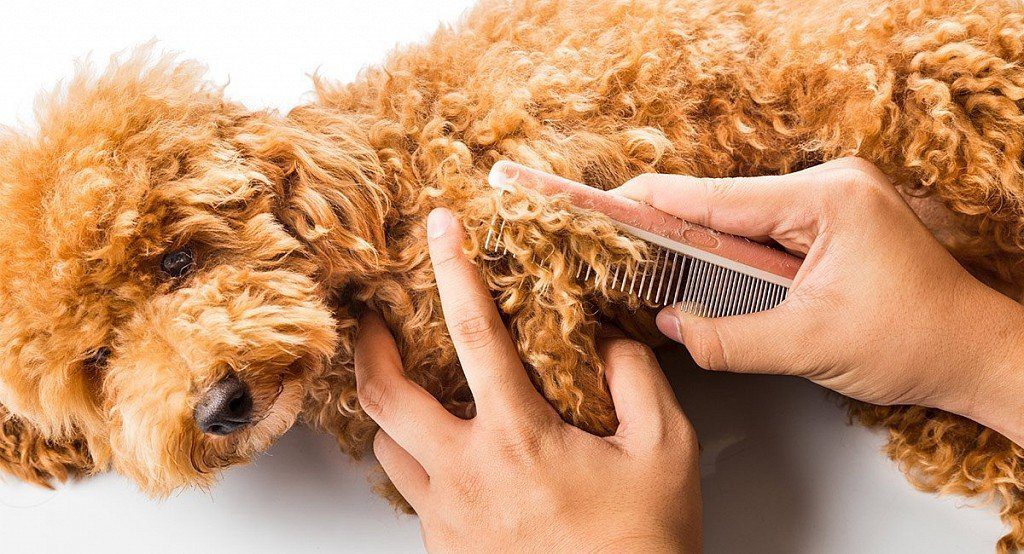

Another important element in the care of a poodle is a systematic haircut. The elastic and springy coat of this dog is the basis of its decorative effect. When pressing on the wool with the palm of your hand, resistance is felt, and it almost instantly restores its original shape. This feature allows you to model a variety of hairstyles, the number of which cannot be compared with a poodle by any dog. In addition to standardized haircuts, there are a lot of fantasy ones, among which the most popular are “sporty” and “sheep”. They represent a simple contouring of the body.
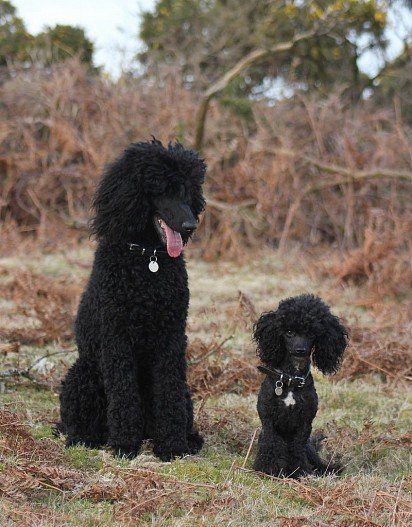

Haircut of the body and limbs should be done every three months, and it is advisable to entrust it to an experienced groomer. In order to learn how to cut a poodle on your own, reading the manual will not be enough, it is better to take practical lessons from the master, ideally, take specialized courses. But to carry out a hygienic haircut is within the power of everyone. The overgrown hair on the muzzle, under the tail, in the genital area is cut off with special scissors every month. Abundantly growing hair between the fingers, crumbs and on the fingers themselves, it is advisable to cut it once every two weeks.
An energetic poodle needs exercise. If he sits too long within four walls, he will certainly get underfoot, inviting his masters to the game. You need to walk it at least three times a day, it is desirable that at least one walk is long, and the dog has the opportunity to run without a leash.
Poodles can be fed both natural food and prepared food. Meat products should make up about a third of the diet. Give preference to beef (preferably not frozen), chicken and beef liver, a tripe is very useful. Some of the meat may be boiled. At the base of cereals, use oatmeal, rice, buckwheat, millet. You need to cook porridge in water, and not in meat broth. It is permissible to treat the pet with pasta, but in minimal quantities. Eggs can be given no more than twice a week. Feed the dog with cottage cheese at the same frequency. If he does not want to eat a raw product, offer him cheesecakes. Periodically add vegetables to the diet, it can be in the form of a salad seasoned with vegetable oil or sour cream.
Buy dry food, canned food, supplements for natural food in specialized stores, giving preference to premium products.
Two-month-old poodles are fed 3-4 times a day, six-month-olds – no more than three. After the dog is 8 months old, it is transferred to two meals a day.
Health and disease of the poodle
The poodle is a fairly hardy and healthy dog, however, there are a number of diseases inherent in this breed:
- Addison’s disease (limited production of hormones by the adrenal gland), often expressed in gastric “disturbances” and lethargy;
- bloating, requiring immediate veterinary attention;
- optic nerve hypoplasia, which is dangerous because it can cause blindness or distorted perception of the environment by the eye;
- PRA – retinal atrophy, is a genetic disease;
- Cushing is a tumor, often malignant, the disease is typical mainly for older dogs;
- chronic active hepatitis – with this liver disease, it is not possible to cure the dog, but the development of the disease can be stopped;
- hypothyroidism – a disease of the thyroid gland;
- deafness.
How to choose a puppy
The choice of poodle puppies is quite wide, due to differences in their color and size. It should be borne in mind that in a family where there is a baby, you should not take a miniature (dwarf) or toy poodle, since dogs from this category often suffer from childish awkwardness. The choice of color depends on subjective preferences. In one litter there can be poodles of different colors.
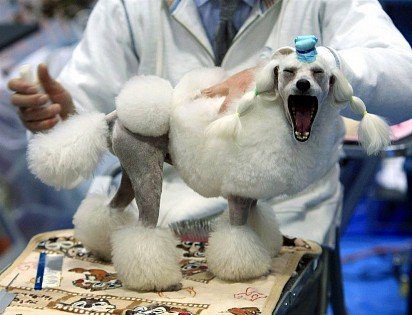

During a visit to a breeder, in whose reputation you must certainly be sure, do not rush to immediately acquire the first puppy you like, but observe his behavior. Healthy poodle puppies are always active, playful, among them you need to choose the most active and curious. Note that females tend to be calmer.
If you decide to opt for a miniature or toy poodle puppy, do not get the smallest of them: he may be the weakest.
Check the poodle’s eyes – they should be clean, without accumulation of secretions in the corners. It is also necessary to examine the tummy for a rash, redness. Do not hesitate to check the condition of the coat under the tail: if it sticks together, it is likely that the dog has digestive problems. The dog should not itch and limp.
Even in purebred poodles of white color, cream or apricot patches of hair may be present on the chest, ears, and lower parts of the limbs – this is not a fault of the breed; with age, the coat will become white. It happens that puppies are born with pink noses, paw pads, but over time these areas darken.
It is preferable to purchase poodle puppies when they are already 2 months old. If you want your chosen one to take part in exhibitions in the future, he must be at least four months old.
The breeder must give you a puppy card, which can then be exchanged for a pedigree, and a veterinary passport with vaccination marks.
Photo of poodle puppies
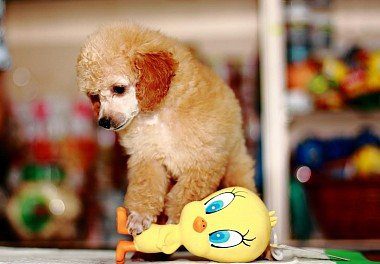

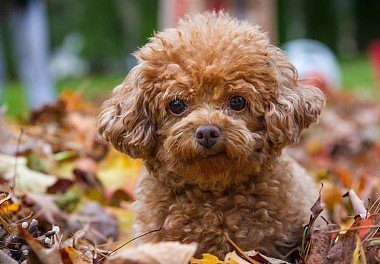

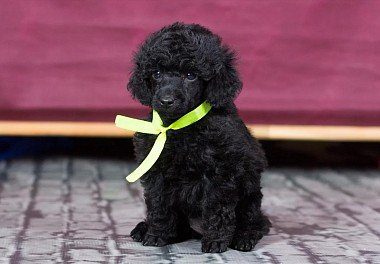

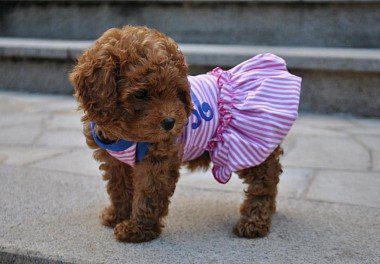

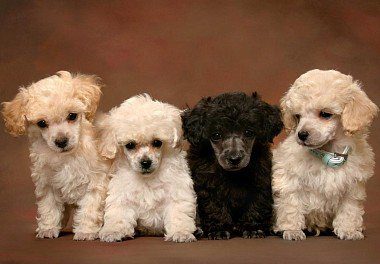

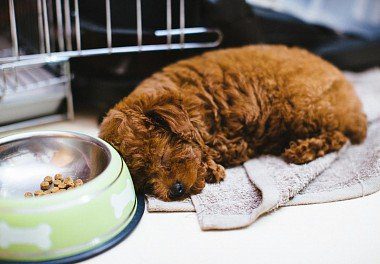

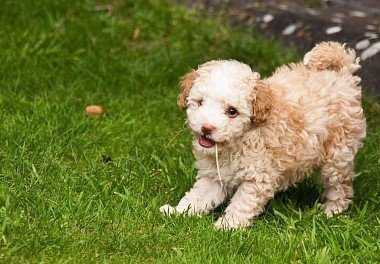

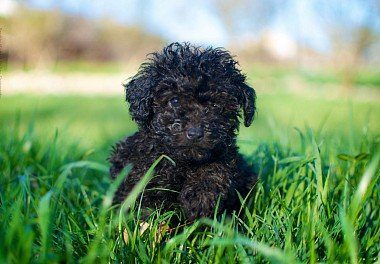

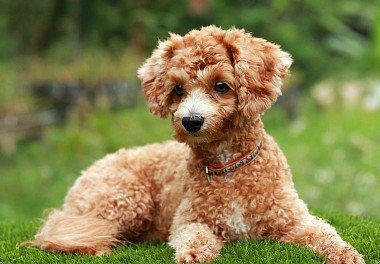

How much is a poodle
The cost of a poodle puppy depends on its size, color, age and location of the kennel.
Show class puppies with exhibition prospects are sold from 1500$. Brid-class kids who can take part in breeding are estimated from 1200$. Poodles belonging to the pet class, having slight deviations from the standard, but completely healthy and beautiful, cost about 900$. Poodles with a rough, horsehair-like coat are always rated lower.





